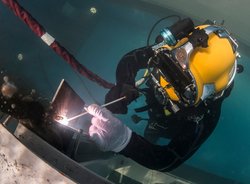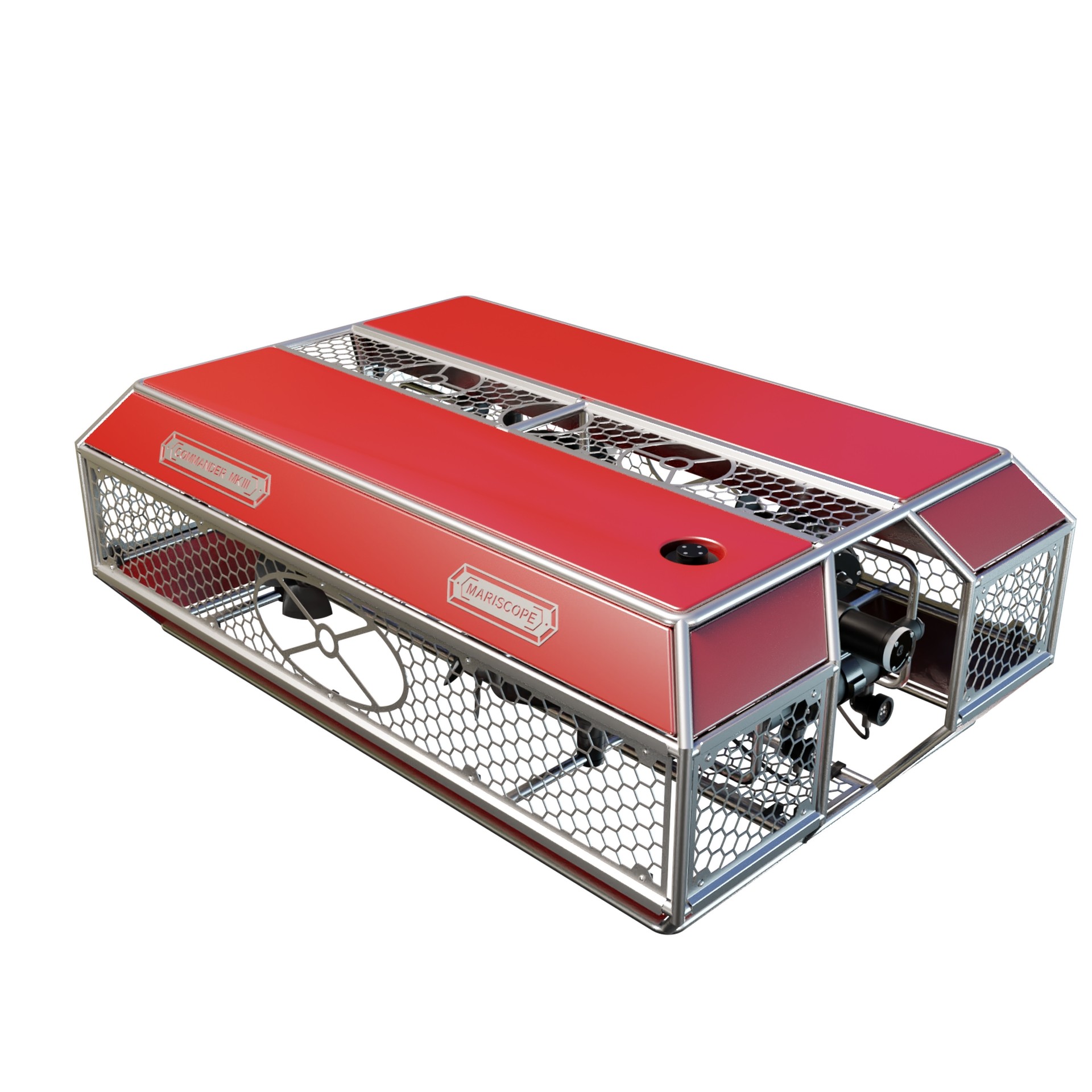MARIOW
Maritime AI-Guided & Remote Operated Welding

Many tasks underwater that previously required divers to operate under dangerous conditions can now be performed by remote-controlled underwater robots. Examples include inspection and salvage. Other tasks, especially welding, still requires the employment of experienced and well-trained divers. Underwater welding is an important part of maintaining critical nearshore infrastructure, such as dilapidated harbour walls. To date, there is no robot with the capability to perform underwater welding. In MARIOW, innovations from the fields of underwater robotics and welding technology are being brought together to develop the world's first underwater welding robot capable of performing welding work semi-autonomously.
| Duration: | 01.10.2022 till 30.09.2025 |
| Donee: | German Research Center for Artificial Intelligence GmbH |
| Sponsor: | Federal Ministry for Economic Affairs and Climate Action |
| Grant number: | 03SX576G |
| Partner: |
Mariscope Meerestechnik e.K. |
| Application Field: | Underwater Robotics |
Project details
The maritime industry is one of the most important and advanced sectors of the German economy and represents a key role in the field of renewable energies. While the expansion of offshore structures is progressing, there is considerable pent-up demand for maintenance and repair technologies. In about 10 years, there is expected to be a significant increase in the need for maintenance of structures made predominantly of metallic materials, such as sheet pile walls.
State-of-the-art repair is performed manually by divers using arc welding with electrode and direct current. Underwater welding is considered one of the most dangerous professions in the world and requires years of professional experience. It is not surprising that diving companies with the appropriate skills are stretched for years. Therefore, there is an urgent need for new systems to maintain and repair critical maritime infrastructure.
The aim of the project is to develop an intelligent and semi-autonomous underwater welding robot, which will enable the automated renewal of underwater structures for the first time worldwide. For this purpose, the development of an underwater vehicle with the ability to dock with metallic construction and equipped with an innovative underwater welding technology for continuous and automated process control as well as powerful sensors for environment detection even under poor visibility conditions is carried out.
The autonomous welding process is enabled by a coordinated control system developed by the DFKI, which ensures the optimal interaction of the subsystems vehicle, docking system and fine adjustment of the welding torch. The primary task is to precisely guide the torch along the weld seam. In addition, the vehicle must be aligned and positioned as precisely as possible under wave action and other disturbing influences to enable welding. To avoid interactions, a holistic control system is required that considers all subsystems and degrees of freedom as well as the different actuator modalities. At the same time, the welding process is monitored to achieve an optimal result. The control is supported by artificial intelligence methods. For example, by learned models that approximate the dynamic behavior of the vehicle and the welding process.
The welding robot will initially be tested in the Large Test Basin in DFKI's Maritime Exploration Hall. Subsequently, autonomous welding will be demonstrated under real conditions.
Compared to the current way of working, the welding robot is expected to significantly improve seam quality, working speed and work safety. The robot thus plays a key role in the maintenance of critical maritime infrastructure.


